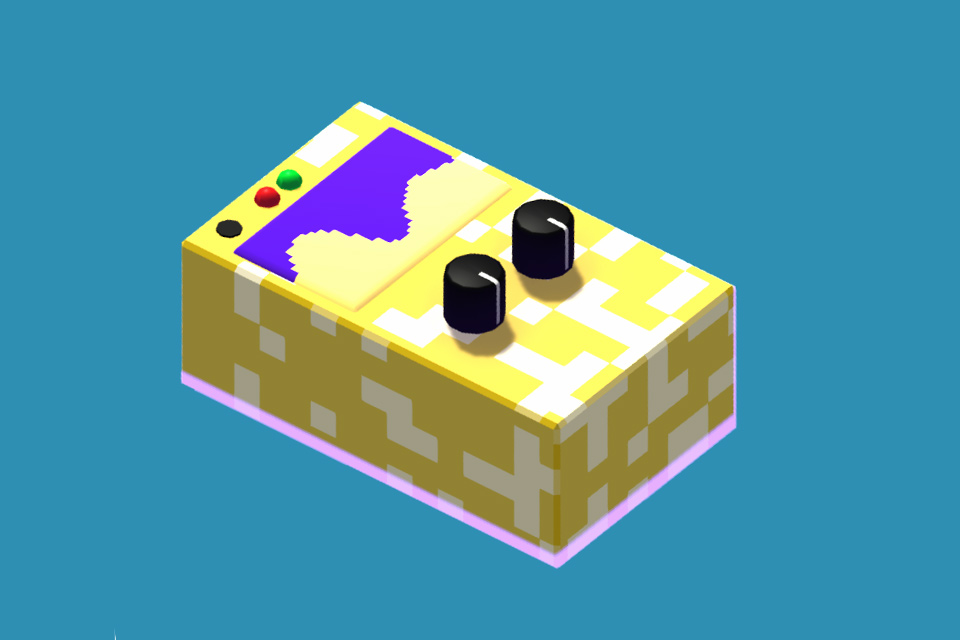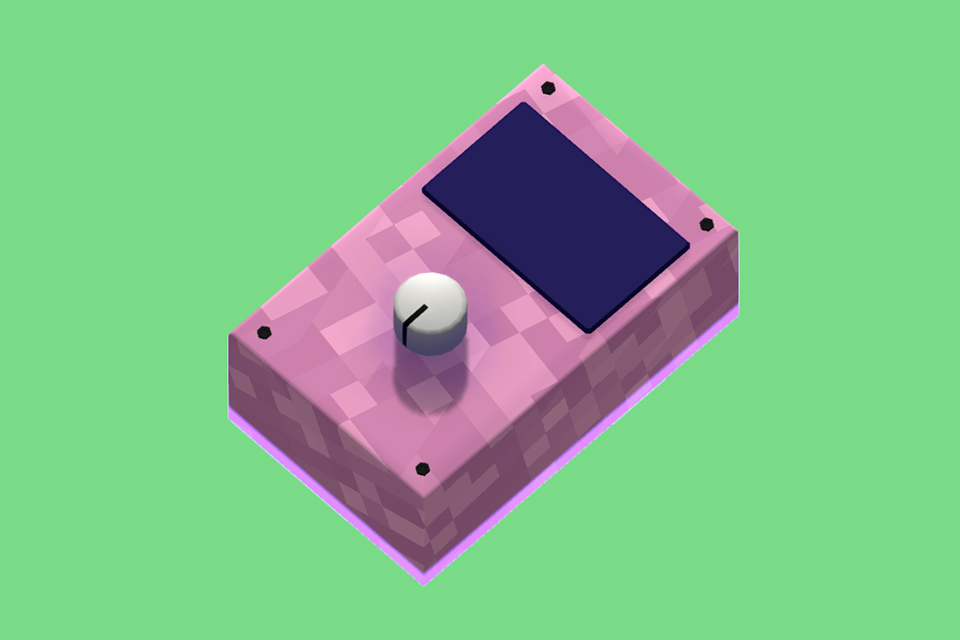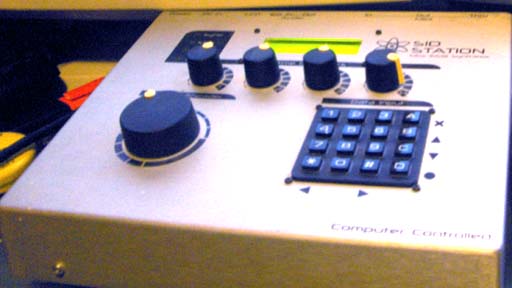8-Bit computer
game music
8-bit music was produced on old consoles like the Nintendo Entertainment System (NES) by programming sound generator chips. It is characterized by a rough, distorted sound due to the 8-bit audio resolution of these consoles. Early systems actually only had a resolution of 1-bit. This type of music is also called chiptune music, as musicians had to program the console's chips to create it. Due to the technical nature of the process, early game musicians were often engineers or skilled programmers.
︎ Floppy Club curated playlist
The Arcade
The first commercially sold, coin-operated video game was the 1971 arcade cabinet Computer Space, one year before Pong. Computer Space included audio, but by today’s standards at very low fidelity. As you can hear from the video it was harsh and noisy, arguably not a pleasant listening experience.
Computer Space Gameplay
A simulation of Computer Space is available at computerspacefan.com (PC).
In 1978 Taito released the game Space Invaders. Often referred to as the first game to have adaptive music, since the speed of the melody changes the closer the aliens are to earth. Space Invaders also featured a display showing two different colors, green tank and barricades versus white aliens and a UFO.
Atari Space Invaders 1980 TV commercial
In 1980 Rally X was released by Namco. Credited as one of the first games to feature both continuous background music and a bonus round.
Rally-X Ad (1980)
Nintendo’s Popeye from 1982 was one of the first games to adapt background music to on-screen events. Every time an item is picked up, a new chord or small melodic phrase is added on top of the loop.
Popeye Ad (1983)
The 1981 smash-hit arcade game Frogger, developed by Konami, was one of the first games to introduce music that changed when a stage was completed. The game features more than ten different themes, a rarity for its time.
Frogger Ad (1983)
For Amusement Only: the life and death of the American arcade | The Verge
https://www.digitpress.com/library/magazines/electronic_games/electronic_games_winter81.pdf
Internet Archive’s Internet Arcade
Video Arcade "Addiction" - CBS Evening News, 1982
Arcade Games - ABC News, 1982
The introduction of the CD on the first Playstation console marked the end of the 8-bit chiptune era, as recorded audio samples replaced programmable sound generators.
Chiptune
The chiptune scene is still very active today, with modern artists like GoTo80 keeping it alive.
The current scene is the first musical movement to spawn directly from the internet. Its roots are held in the demoscene subculture of the 1980s and early 1990s, a time where all computer and video game music was essentially “chip music”.
A special mention should go to the Underwater Theme from the Super Mario Bros game, composed by Koji Kondo for Nintendo. Besides being a wonderful track, what made this track very interesting was that it was made in ¾ waltz tempo to accommodate the feeling of swimming under water. Until this day you will often hear either this tempo or a so-called arpeggiators for synthesizers, very often used in underwater scenes in games.
Different techniques explored: The shepard tone in Super Mario
Nintendo has always been pushing the boundaries for what is possible in making playful music and sound in games. The use of the so-called Shepard's tone in the game Super Mario 64 is a good example of this. Most people know about this technique from modern films such as Dunkirk.
Endless Stairs 10 Hours Super Mario 64
Famous composers from the 80s and 90s 8-bit scene include:
Rob Hubbard,
Manami Matsumae (Mega Man, Mighty No. 9)
Nobuo Uematsu (Final Fantasy series composer)
Hiroshi Kawaguchi (Space Harrier, OutRun, Sonic The Hedgehog)
Yuriko Keino (DigDug, Pole Position)
Hirokazu Tanaka (Donkey Kong, Duck Hunt, Metroid)
Koji Kondo (Super Mario, The Legend of Zelda)

The ‘chiptune’ scene is still active today, with modern artists like GoTo80 keeping it alive. Game music gained mainstream popularity after the release of the game Pac-Man and became popular when famous musicians sampled and released it. The sound of 8-bit music varied depending on the console's technology, with the SID chip on the Commodore 64 being a notable example. The introduction of the CD on the first Playstation console marked the end of the 8-bit chiptune era, as recorded audio replaced programmable sound generators.
The first mass produced game to include audio was the game computer space from 1971.
This was mainly harsh noisy sounds, and not really that pleasant to listen to. Computer space.
In 1978 the game space invaders was released. This is often referred to as the first game to have adaptive music. Compared to the computer games of today this was extremely simple, and the only way the music was adaptive, was by changing the speed of the music the further you got in the game. Listen to music here.
The Rally X game from Namco released in 1980 was one of the first games to utilize the programmable sound chips for performing the music in the game.
The game Popeye (1982, Nintendo) was one of the first games to generate music depending on how you played. Every time a pickup in the game was taken, a new chord or small phrase was added on top of musical loops.
Frogger (1981, Konami) was the on of the first games to introduce different music for different areas or states in the game. There was more than 10 different themes in the game, which at that time was very rare.
A special mention should go to the Underwater Theme from the Super Mario Bros game, composed by Koji Kondo for Nintendo. Besides from being a wonderful track, what made this track very interesting was that it was made in ¾ waltz tempo to accommodate the feeling of swimming under water. Until this day you will often hear either this tempo or a so-called arpeggiators for synthesizers, very often used in underwater scenes in games.
If you are interested in commodore 64 music, you should download a so called SID player and listen to all the original music. A huge collection of all the early music can be found here.
Instruments & Technology



The SID Synthesizer
A synthesizer based on the SID chip, which was originally made for the Commodore 64 home computer in the early 80s. The sound of the SID is known for being noisy, gritty and sharp.
An emulator of the SID chip for MacOS is available for download along with a massive collection of playable music.

Stutter Effect
An effect used in modern music for simulating glitches in playback. A very section of audio is recorded and repeated, creating a glitchy stuttering effect.
Bit-Crusher
This effect is often used in modern electronic music to simulate the sound of old computer games. It works by lowering the resolution of the audio signal, thereby distorting the sound.

Amiga 500
Released in 1987 by Commodere, the Amiga 500 was the best-selling Amiga system by a wide margin. Aimed at the home market, it was the first Amiga system to include both video games and productivity software straight out of the box.
The Amiga 500 was (and is still) used with a type of software called a music tracker. A digital audio workstation that represents music as an array of data, displayed from top to bottom, rather than left to right as is common with classical notation. By far the most used tracker for the Amiga system is Protracker. Protracker was incredibly popular in the early 90s, allowing both professional- and amateur composers to create sample-based music. It is still available for download.
LGR review of the Amiga 500
1988 Computer Chronicles about the Amiga 500
Oscilloscope showing a tracker tune

Nintendo Game Boy
The Nintendo Game Boy is the staple of the Chiptune scene. Used in conjunction with a modified Game Boy cartridge with a tracker installed, Little Sound DJ for example, an artist can compose and perform original songs on original hardware.
Although not required, many artists use modded Game Boys, replacing the original mini-jack output with either RCA jacks or regular jack outputs.
(indsæt eventuelt billede af Game Boy med modificeret output)
ComputeHer explaining the fundamentals of using LSDJ with the Game Boy
Joe Bleeps’ guide to ‘Game Boy Pro Sound’
Performance: Henry Homesweet - Out-House #10
Sources
Music Made on Game Boys Is a Much Bigger Deal Than You'd Think (Houston, Niamh. 2014)
The 35 Year Music Synthesizer That Spawned Chiptune | Hackaday (Williams, Al. 2017)
Gamings Most Important Evolutions (US, GamesRadar. 2011)
The sound of SID: 35 years of chiptune's influence on electronic music (Newman, James 2017)
The Amiga Museum - Amiga 500 (Amiga Museum, The. 2017)
Shadow of the 16-bit Beast: an Amiga gaming retrospective | Ars Technica (Reimer, Jeremy. 2010)
Funny videos
Arcades in the 80's
[RARE] '90s Footage of a Tokyo Video Game Arcade
Frogger, Now A Home Video Game! (Commercial, 1983)







